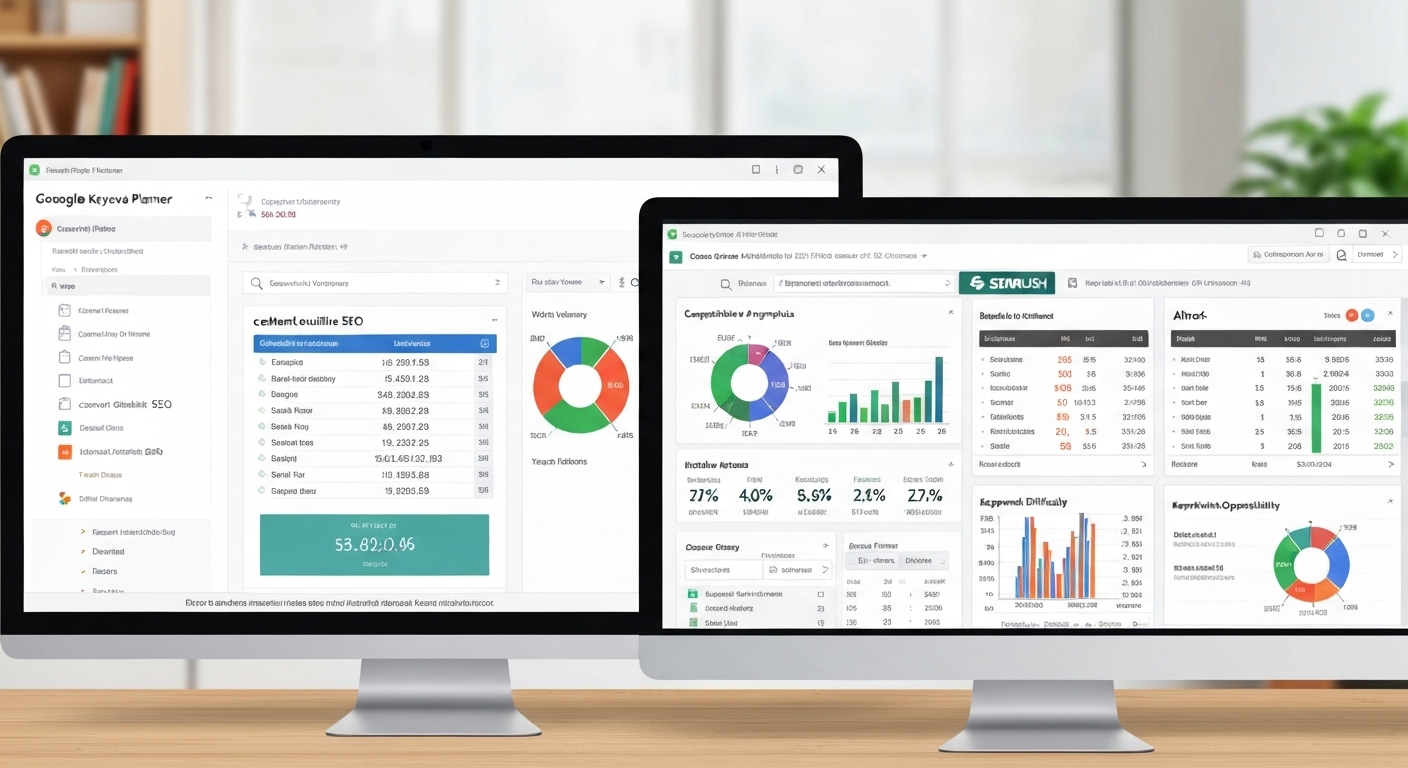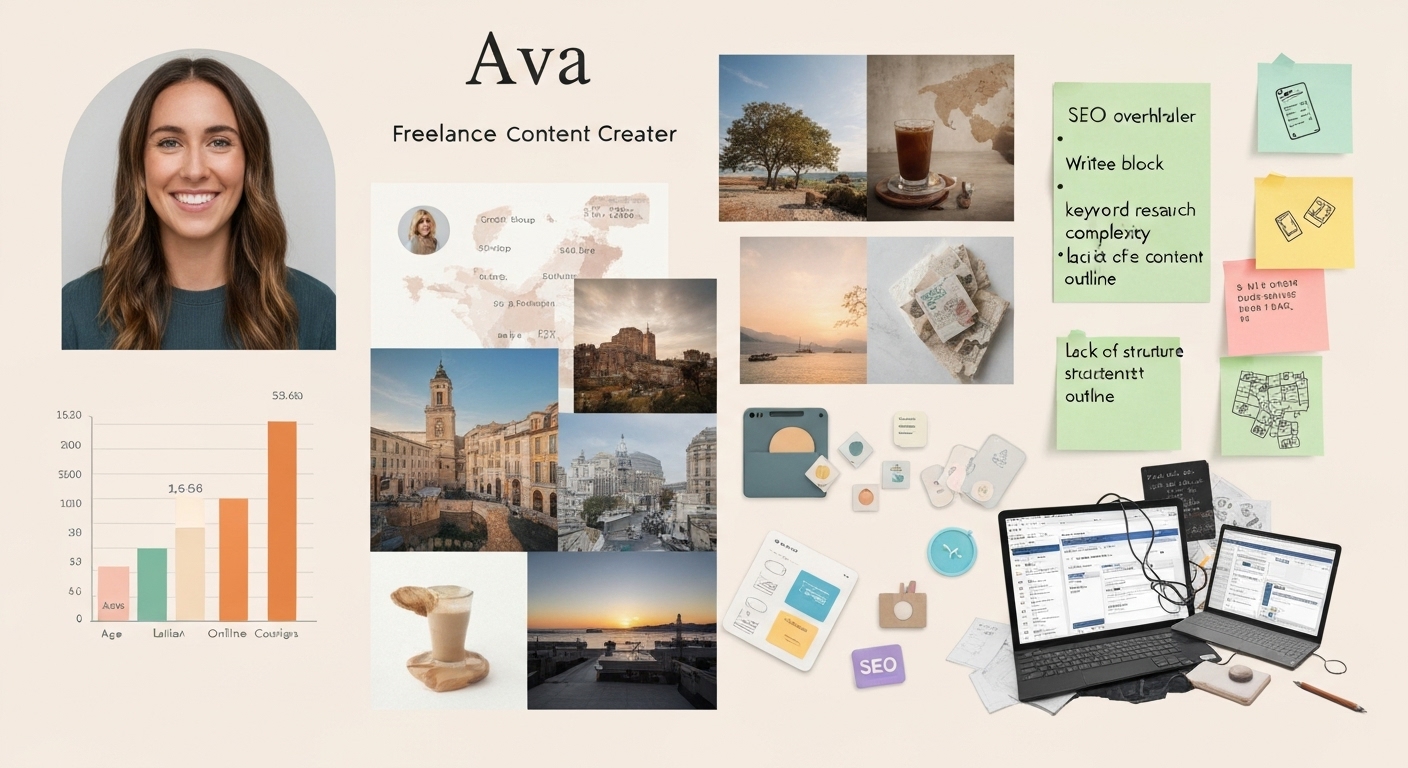Creating a Content Outline for SEO : A Step – by – Step Guide
Creating a content outline for seo is fundamental to building a successful online presence. A well-structured outline ensures your content is both search engine friendly and engaging for your target audience. This comprehensive guide will walk you through the process, from initial keyword research to final content structuring.
Why is Creating a Content Outline for SEO Important?
Before diving into the ‘how,’ let’s understand the ‘why.’ A content outline is more than just a list of headings; it’s the backbone of your content. It provides structure, ensures logical flow, and helps you stay focused on your target keywords. By carefully structuring your content, you improve readability, user engagement, and ultimately, your search engine rankings.

Step 1: Keyword Research for SEO Content
Keyword research is the foundation of any SEO content strategy. Start by identifying relevant keywords that your target audience is searching for. Use tools like Google Keyword Planner, SEMrush, or Ahrefs to find keywords with high search volume and low competition. Focus on both broad keywords and long-tail keywords to capture a wider audience. For example, instead of just “SEO,” consider “SEO content strategy for beginners.”

Identifying Long-Tail Keywords
Long-tail keywords are longer, more specific phrases that people use when they’re closer to making a purchase or seeking very specific information. Targeting these keywords can drive highly qualified traffic to your website. Incorporate long-tail keywords naturally within your content, addressing specific user queries.
Step 2: Understanding Your Target Audience
Knowing your audience is crucial for creating content that resonates with them. Understand their demographics, interests, pain points, and search intent. This will help you tailor your content to their specific needs and preferences. Conduct audience research through surveys, social media analysis, and website analytics.

Step 3: Structuring Your Content Outline
Now, let’s get into the actual process of creating your content outline. Start with a main topic and then break it down into smaller, more manageable sections. Each section should address a specific aspect of the main topic and incorporate relevant keywords. Consider using a hierarchical structure with headings (H2, H3, H4) to organize your content logically.
Creating Effective Headings and Subheadings
Headings and subheadings are essential for readability and SEO. Use clear, concise, and keyword-rich headings to guide readers through your content. Each heading should accurately reflect the content of the section below. Incorporate your primary keyword, “creating a content outline for seo,” and secondary keywords naturally within your headings.
Step 4: Researching and Gathering Information
Before you start writing, conduct thorough research on your chosen topic. Gather information from credible sources, such as industry reports, academic studies, and reputable websites. This will ensure that your content is accurate, informative, and valuable to your audience. Always cite your sources appropriately.
Step 5: Crafting Engaging Content
Once you have your outline and research, it’s time to start writing. Focus on creating engaging content that captures the reader’s attention and keeps them reading. Use clear, concise language, and avoid jargon or overly technical terms. Incorporate visuals, such as images and videos, to break up the text and make your content more appealing.
Optimizing Content for Readability
Readability is crucial for user engagement and SEO. Use short paragraphs, bullet points, and numbered lists to make your content easier to scan and digest. Break up long blocks of text with visuals and white space. Aim for a readability score of 60 or higher on the Flesch Reading Ease test.
Step 6: Optimizing for SEO
Creating a content outline for seo also means optimizing your content for search engines. This involves incorporating your target keywords naturally within your text, meta descriptions, and image alt tags. Ensure your website is mobile-friendly and loads quickly. Build high-quality backlinks to improve your website’s authority.
Using Keywords Effectively
Keyword stuffing can harm your SEO efforts. Instead, focus on using keywords naturally and contextually within your content. Aim for a keyword density of 1-2%. Use synonyms and related terms to avoid repetition. Optimize your meta descriptions and title tags with relevant keywords.

Step 7: Adding Visual Elements
Visuals are essential for engaging your audience and breaking up long blocks of text. Incorporate images, videos, infographics, and other visual elements to make your content more appealing. Optimize your images for SEO by using descriptive file names and alt tags.
Step 8: Internal and External Linking
Internal and external linking are important for SEO and user experience. Link to other relevant pages on your website to improve navigation and encourage users to explore more of your content. Link to authoritative external sources to add credibility and provide additional information. A reputable source for understanding SEO best practices can be found on developers.google.com.
Step 9: Reviewing and Editing Your Content
Before publishing your content, review and edit it carefully for grammar, spelling, and clarity. Ensure that your content is accurate, informative, and engaging. Use a grammar checker tool to identify and correct any errors. Ask a colleague or friend to proofread your content for a fresh perspective.
Step 10: Promoting Your Content
Once your content is published, promote it through various channels, such as social media, email marketing, and paid advertising. Share your content with your target audience and encourage them to share it with their networks. Monitor your website analytics to track the performance of your content and identify areas for improvement.

Tools to Help You Create Content Outlines
Several tools can streamline the process of creating a content outline for SEO. Mind mapping software like MindMeister can help you visualize your content structure. Project management tools like Trello or Asana can help you organize your content calendar and track your progress. Keyword research tools like SEMrush and Ahrefs can help you identify relevant keywords.
Using Mind Mapping for Content Planning
Mind mapping is a visual technique for organizing your thoughts and ideas. Use mind mapping software to create a visual representation of your content outline. Start with the main topic in the center and then branch out to subtopics and related ideas. This can help you see the big picture and identify gaps in your content.
- Choose a Mind Mapping Tool
- Start with your Main Topic
- Add Subtopics
- Connect Related Ideas
Conclusion
Creating a content outline for seo is a crucial step in building a successful online presence. By following the steps outlined in this guide, you can create content that is both search engine friendly and engaging for your target audience. Remember to focus on keyword research, audience analysis, content structuring, and SEO optimization. With a well-structured content outline, you can improve your search engine rankings, drive more traffic to your website, and achieve your business goals.
HOTLINE
+84372 005 899


